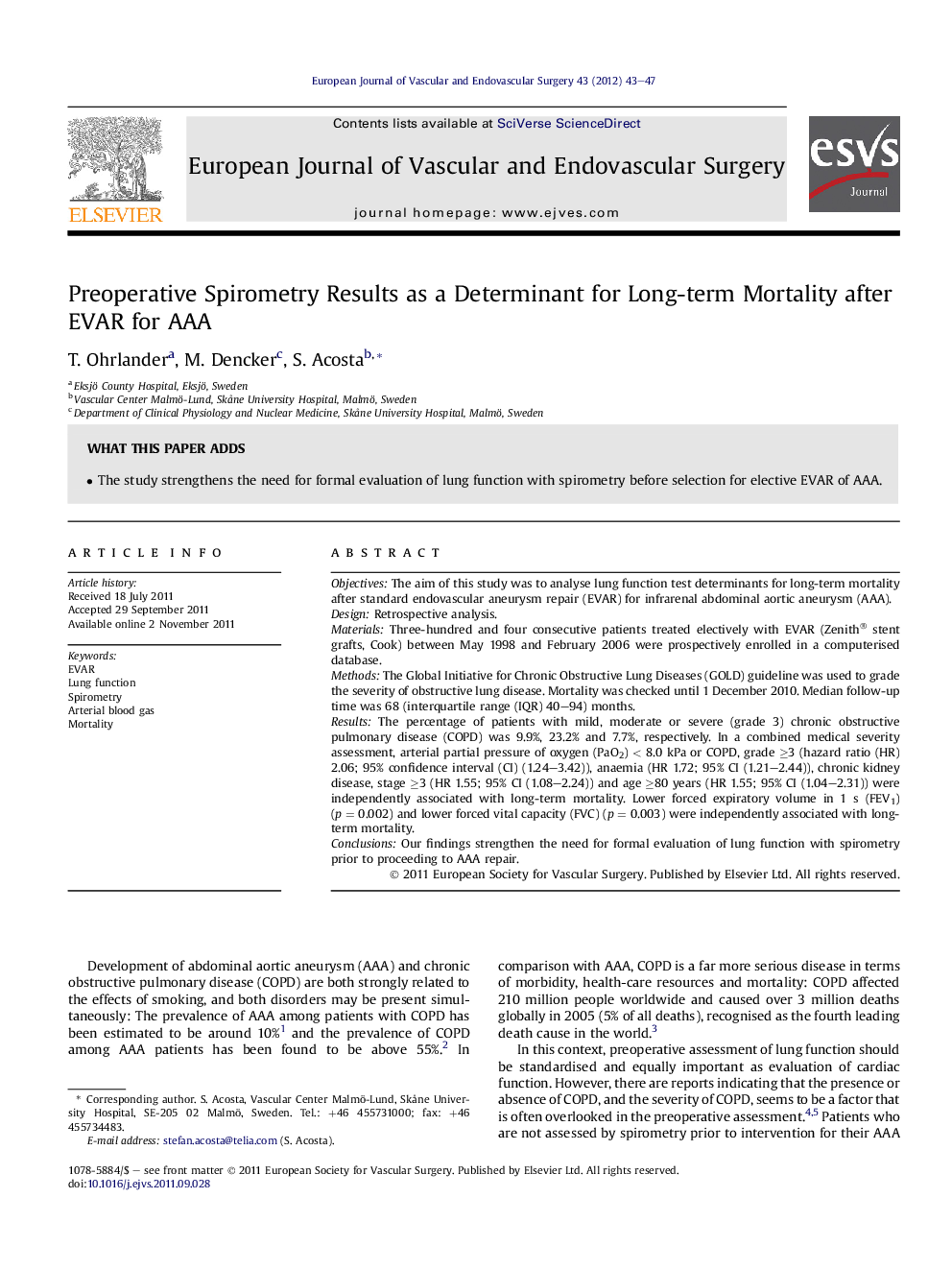| Article ID | Journal | Published Year | Pages | File Type |
|---|---|---|---|---|
| 2913701 | European Journal of Vascular and Endovascular Surgery | 2012 | 5 Pages |
ObjectivesThe aim of this study was to analyse lung function test determinants for long-term mortality after standard endovascular aneurysm repair (EVAR) for infrarenal abdominal aortic aneurysm (AAA).DesignRetrospective analysis.MaterialsThree-hundred and four consecutive patients treated electively with EVAR (Zenith® stent grafts, Cook) between May 1998 and February 2006 were prospectively enrolled in a computerised database.MethodsThe Global Initiative for Chronic Obstructive Lung Diseases (GOLD) guideline was used to grade the severity of obstructive lung disease. Mortality was checked until 1 December 2010. Median follow-up time was 68 (interquartile range (IQR) 40–94) months.ResultsThe percentage of patients with mild, moderate or severe (grade 3) chronic obstructive pulmonary disease (COPD) was 9.9%, 23.2% and 7.7%, respectively. In a combined medical severity assessment, arterial partial pressure of oxygen (PaO2) < 8.0 kPa or COPD, grade ≥3 (hazard ratio (HR) 2.06; 95% confidence interval (CI) (1.24–3.42)), anaemia (HR 1.72; 95% CI (1.21–2.44)), chronic kidney disease, stage ≥3 (HR 1.55; 95% CI (1.08–2.24)) and age ≥80 years (HR 1.55; 95% CI (1.04–2.31)) were independently associated with long-term mortality. Lower forced expiratory volume in 1 s (FEV1) (p = 0.002) and lower forced vital capacity (FVC) (p = 0.003) were independently associated with long-term mortality.ConclusionsOur findings strengthen the need for formal evaluation of lung function with spirometry prior to proceeding to AAA repair.
